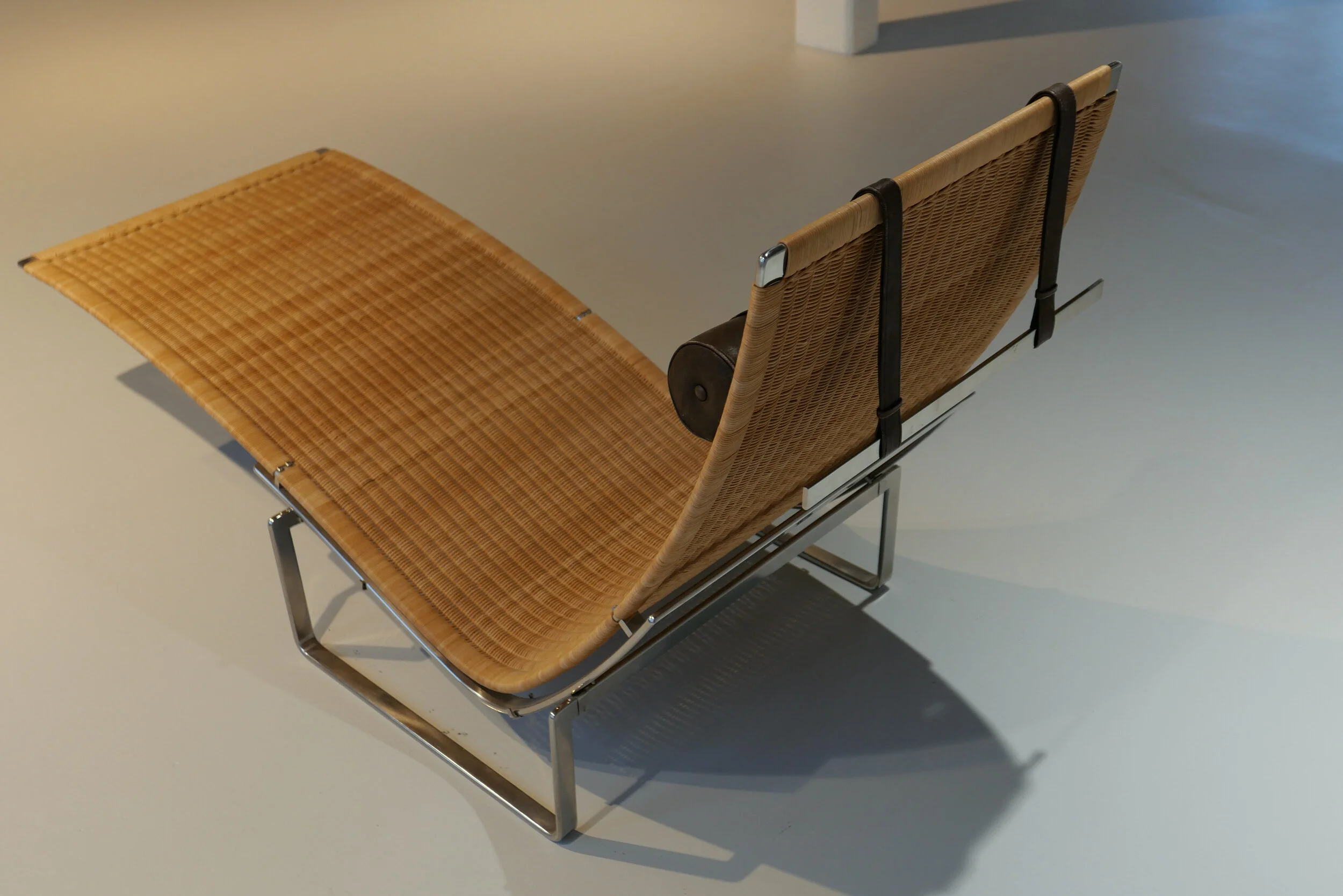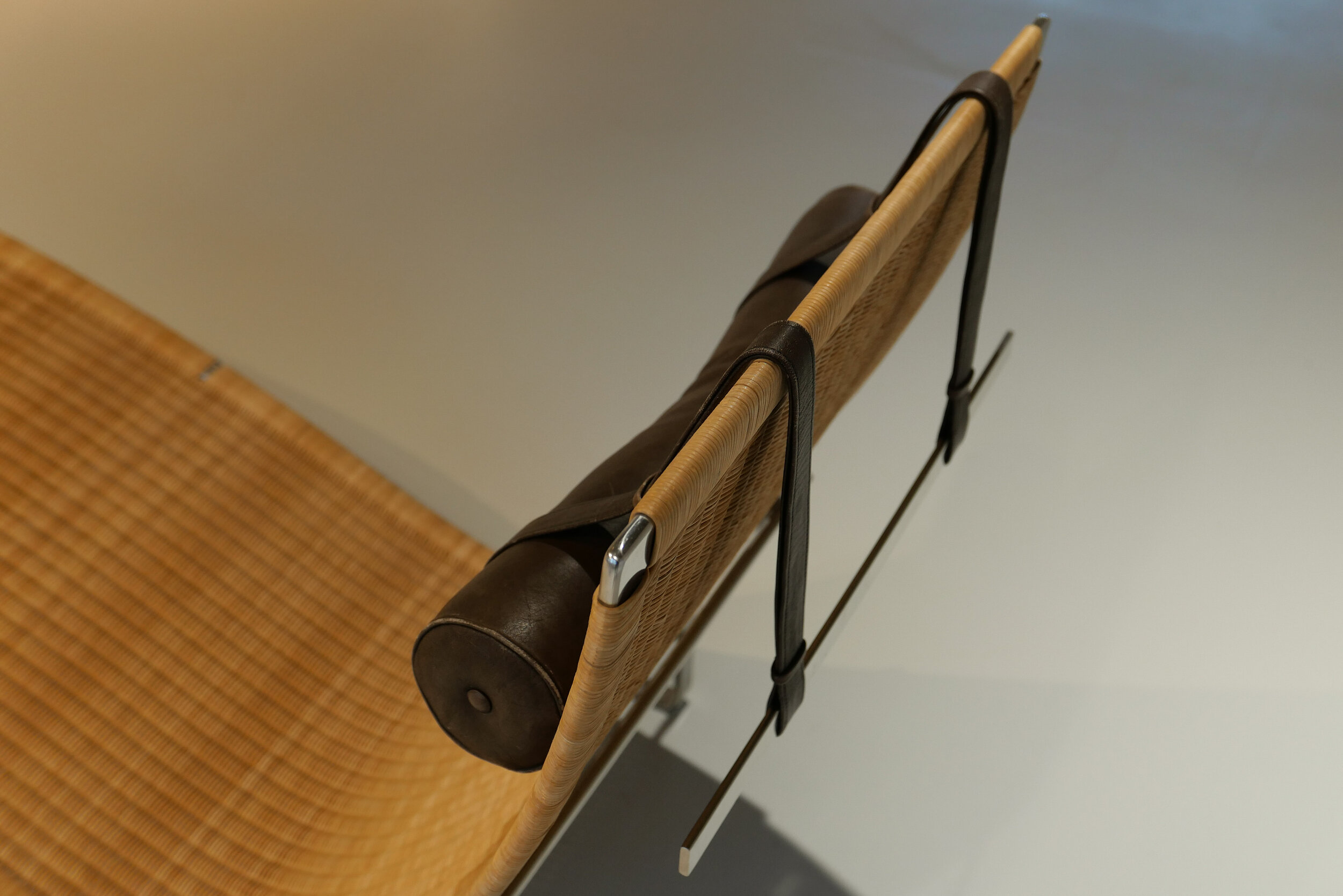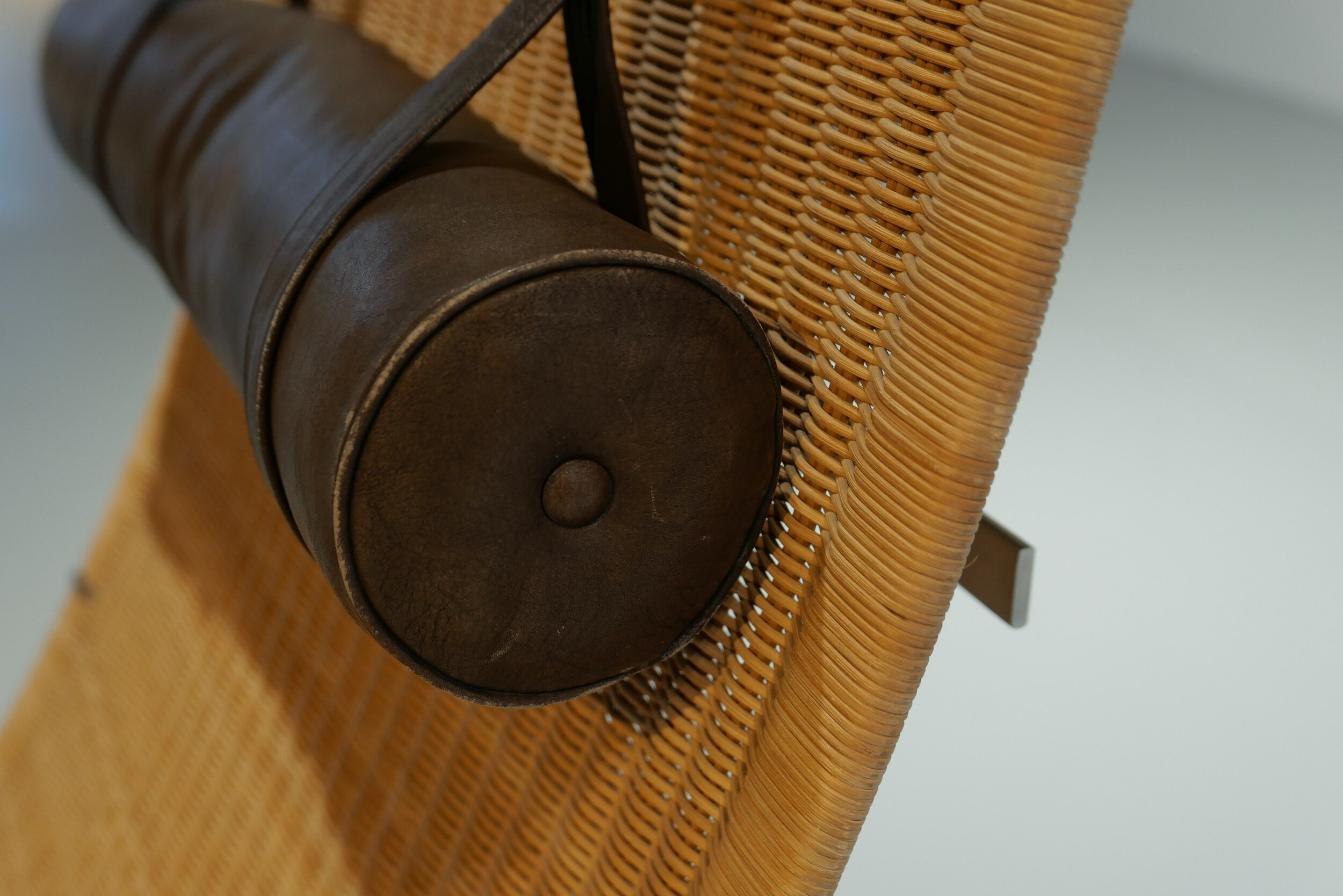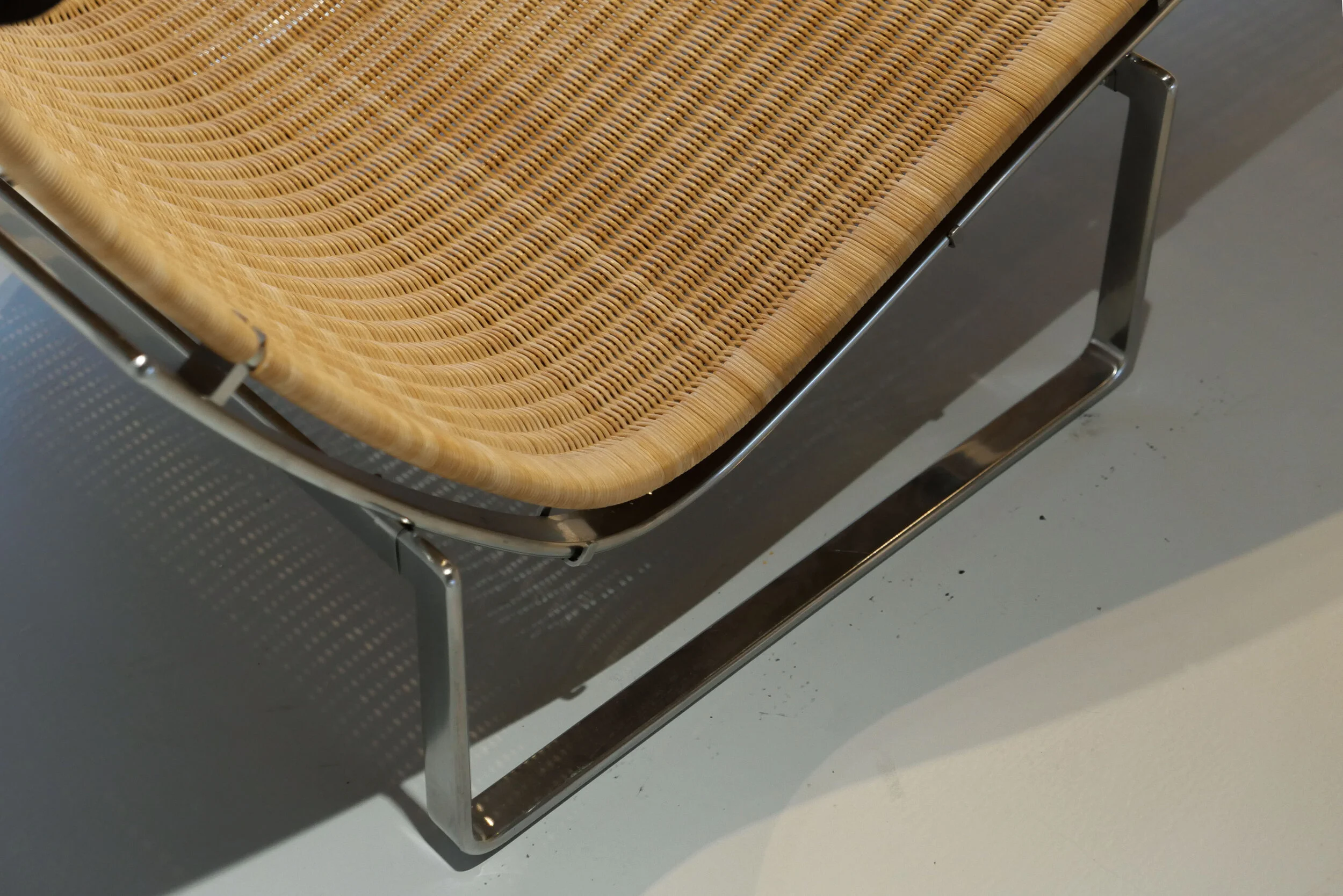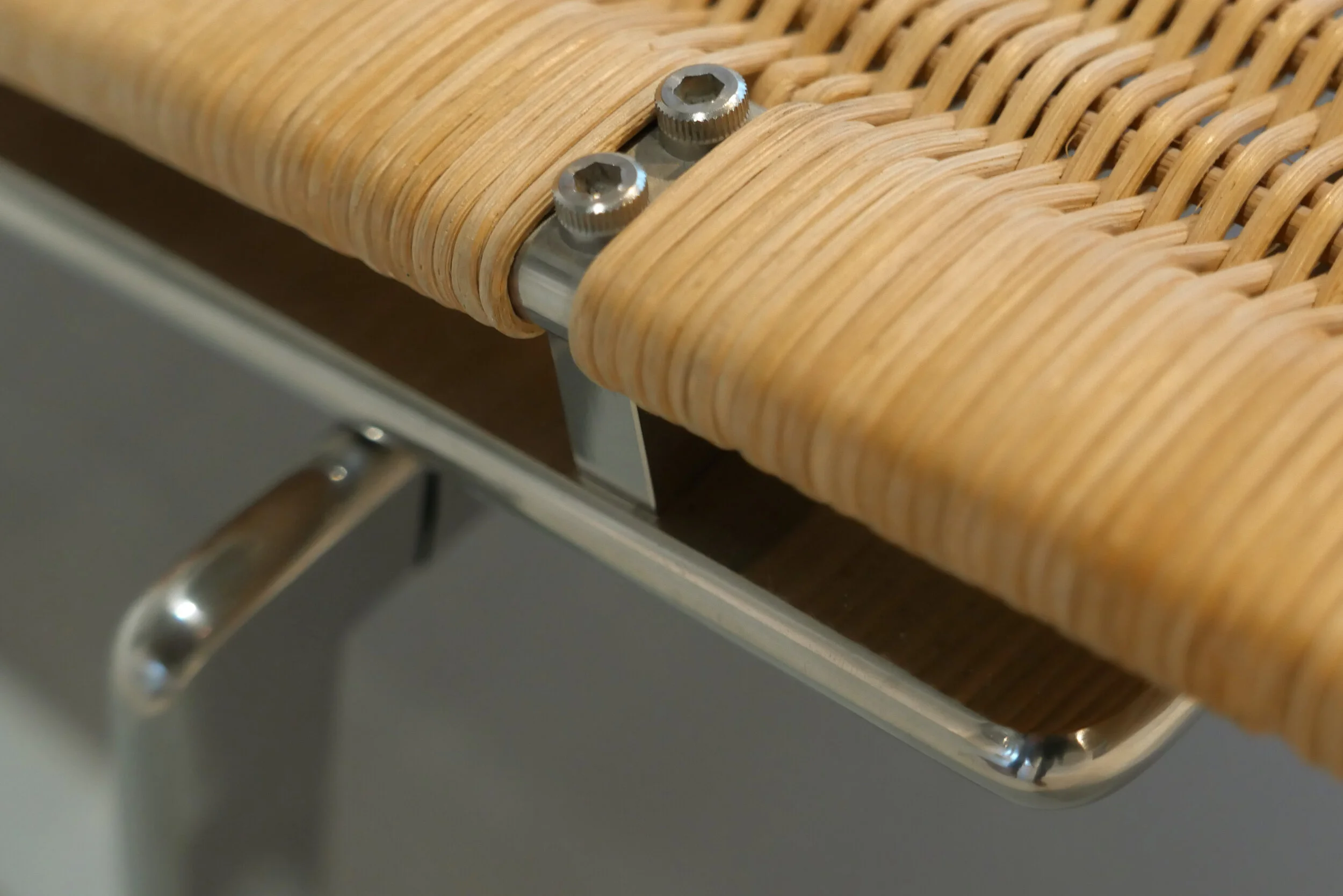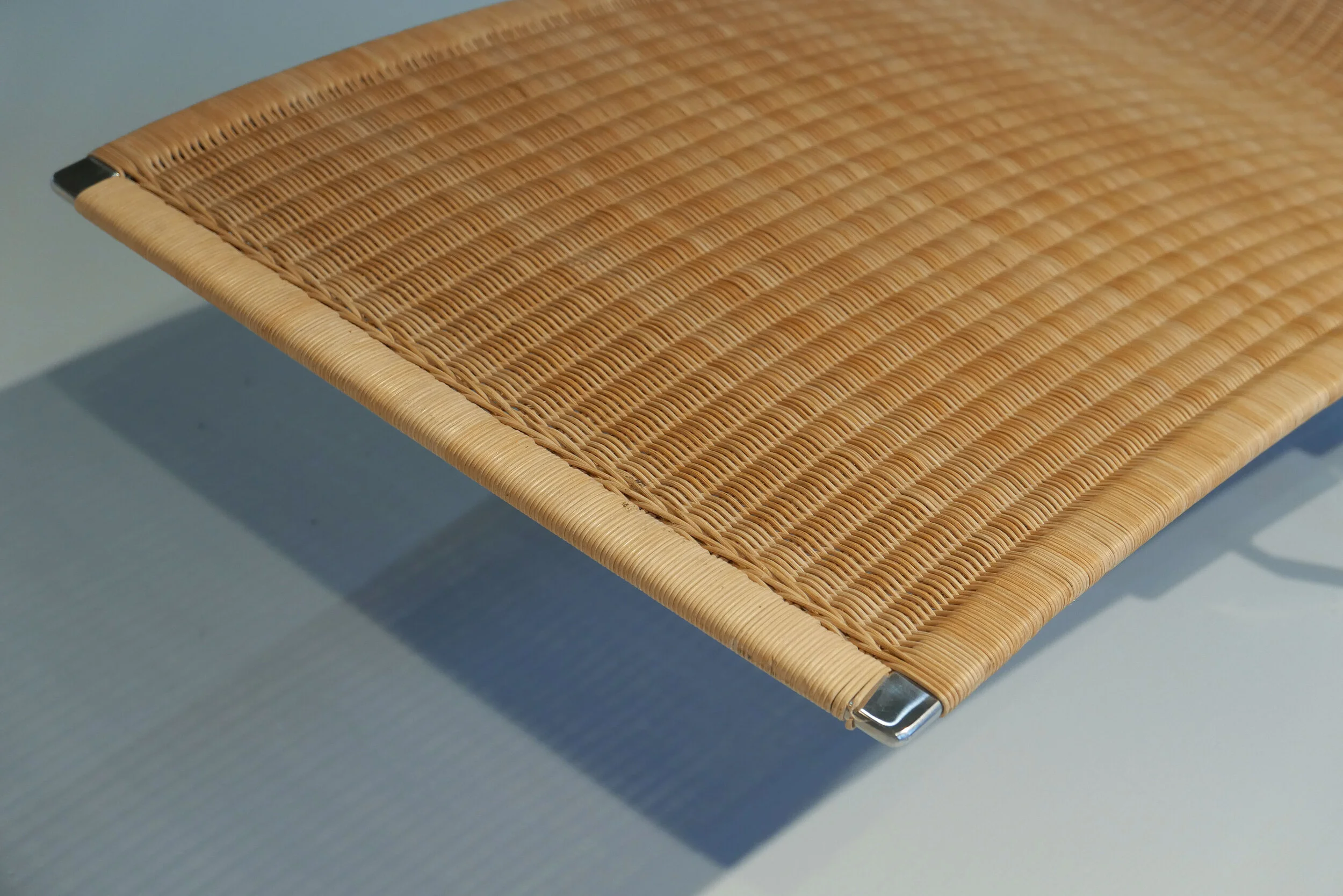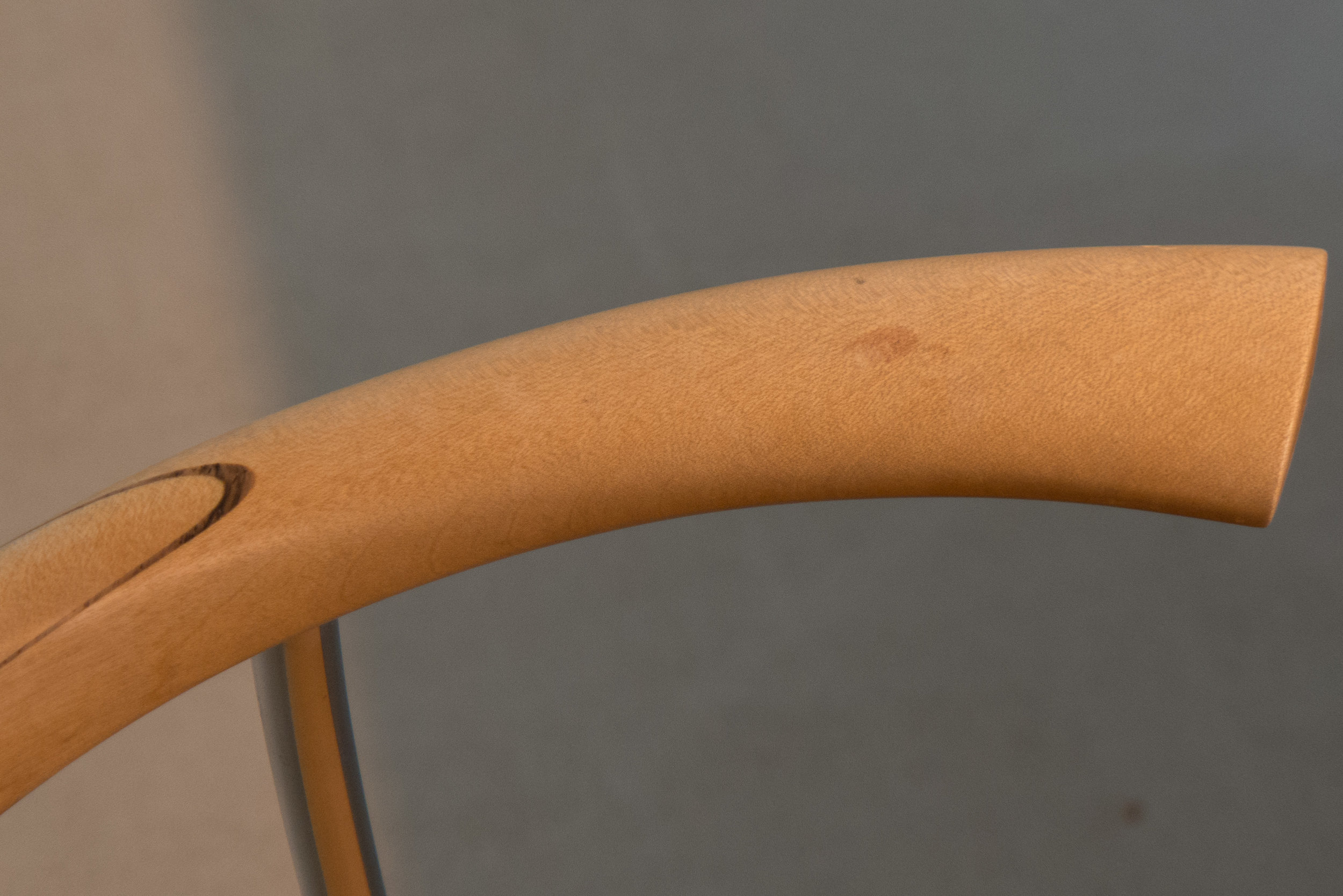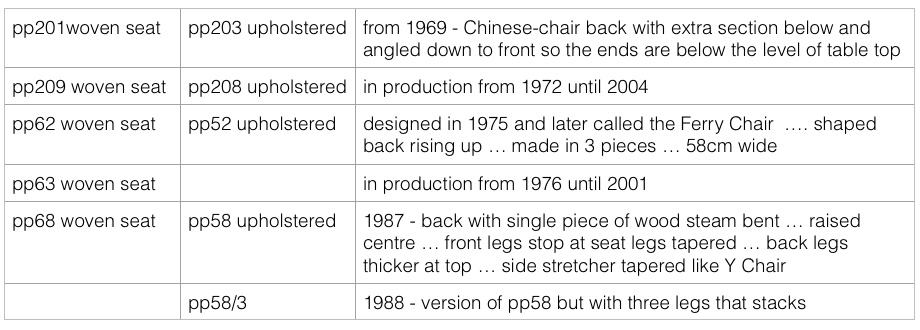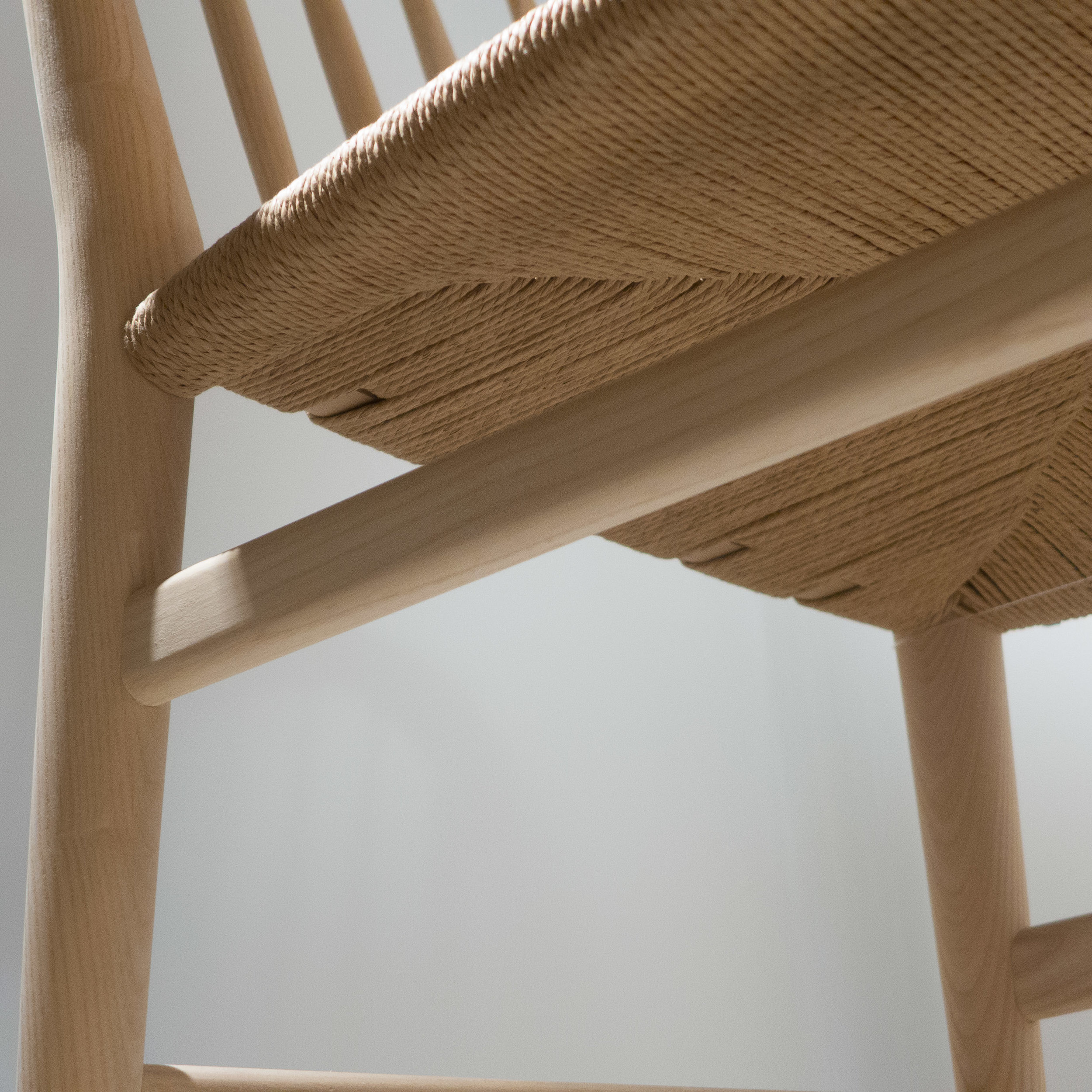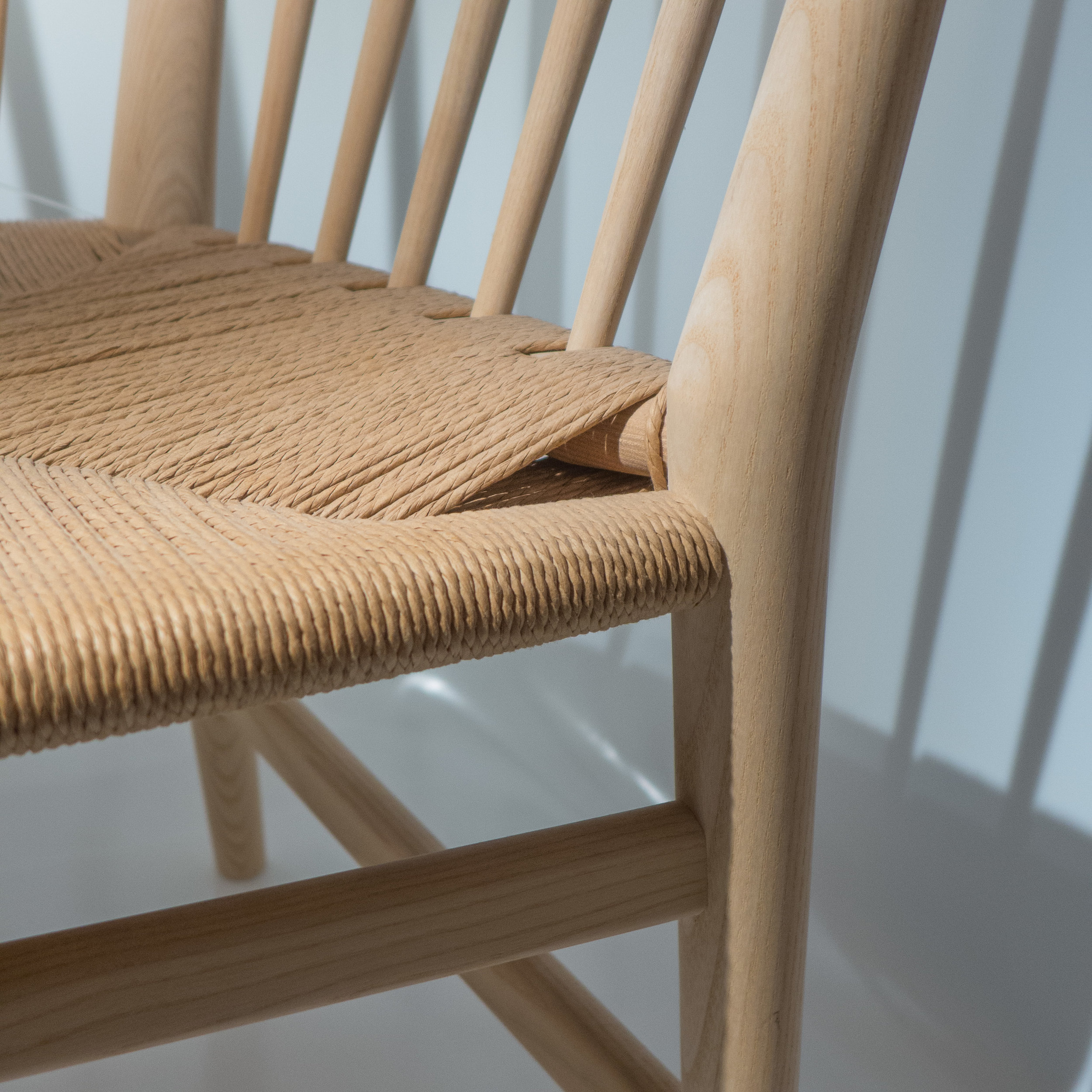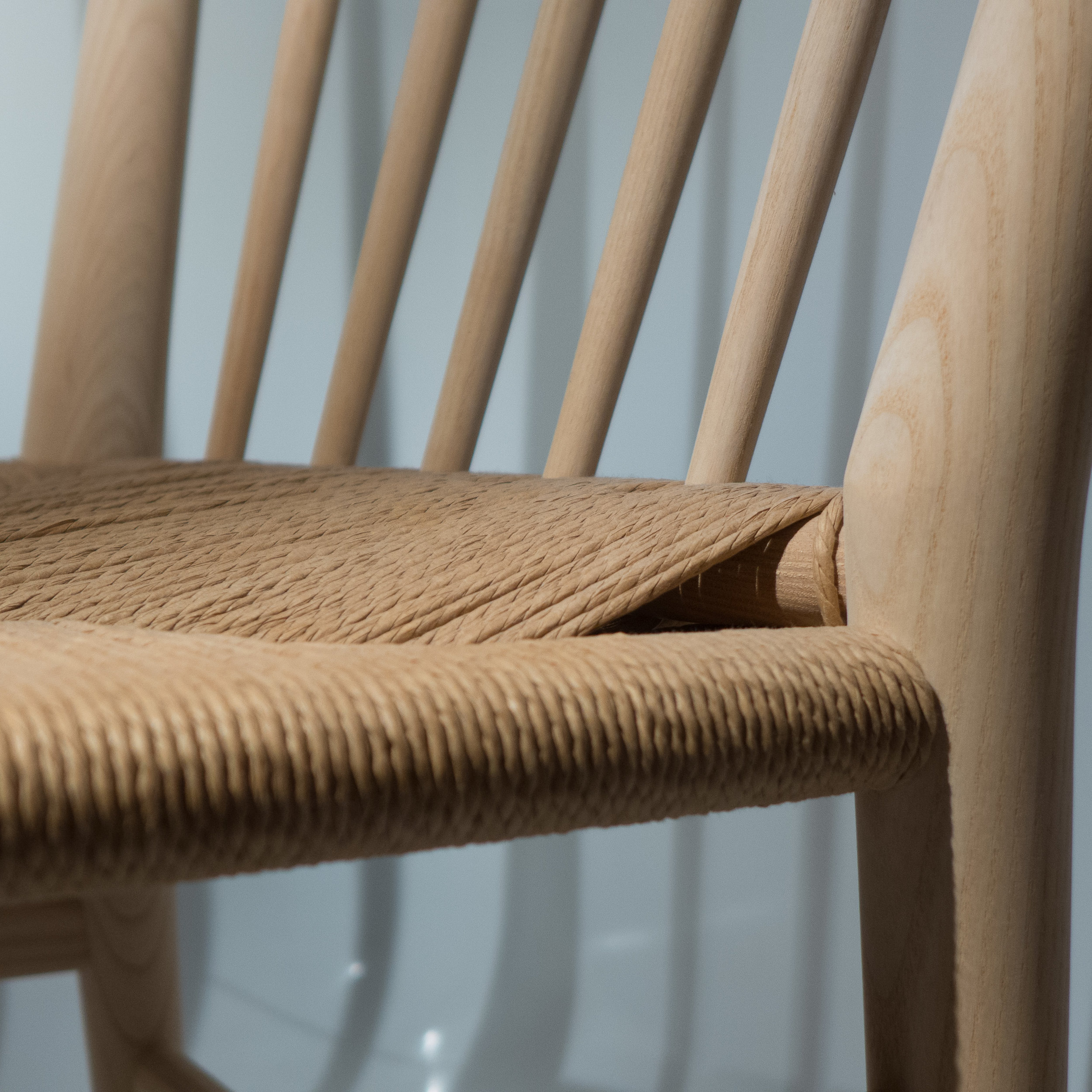PK24 / ECK24 by Poul Kjærholm 1965
/
This has to be one of the most elegant recliners and one of the most stripped down and spare. It is simply a frame in sprung steel covered with a taut skin of woven cane and supported on the thinnest possible steel frame.
There is a separate frame of steel that folds under the centre section of the seat - running parallel to the cane work but separated from it by spacers. This forms what looks like a sledge or from the side runners that rest on a simple frame … a third rectangle in flat steel strip but with the ends bent upwards but at an angle to form a cradle.
The round table PK54 designed by Kjærholm in1963 - with square frames in steel slotted together to form a cube - or the glass table PK61 designed in 1956 - with four L-shaped pieces of steel together forming a frame and legs - play the same intellectual game to produce sophisticated three-dimensional forms out of minimal elements … almost like an artist marking an edge or a shadow with a slightly heavier weight of line, to define a volume, and then obliterating everything else to rely just on that emphasis of the edge.
Here the use of cane is equally unique. Not the material itself, of course, but on all other furniture with cane work you are aware of a frame first that is filled in with a lattice of cane - the cane does not exist without the frame. On the PK24 you see first a sheet of woven cane and it is only when you look again that you work out what holds the curved form because without the steel, keeping that shape would be impossible. All that is visible of the steel frame of the seat and back is a small square of exposed metal at each corner.
The chair comes also in leather and the same holds true … you see first a swoosh of leather and then have to work out how that shape is formed and held.
There is a leather covered head rest with both chairs but where other recliners have pillows held in place by knots or belts with buckles this head rest is a simple roll with a counterweight of steel on two straps slung over the top of the back rest.
designed by Poul Kjærholm (1929-1980)
PK24 made first by E Kold Christensen and then from 1982 by Fritz Hansen Eftf
steel, cane, leather-covered head rest
height: 87 cm
width: 67 cm
length: 155 cm
exhibition Reclining at Designmuseum Danmark in 2015

